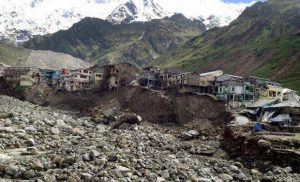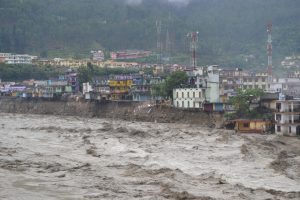In June this year, the China National Petroleum Corporation (CNPC) announced that the Burmese section of a $5 billion China-Myanmar gas pipeline had been completed and was ready for testing, while an oil pipeline was 94% complete and on-schedule.
China’s decision-makers see the new routes as a solution to the ‘Malacca problem’, where China’s energy supplies are overly reliant on sea lanes passing through the narrow Strait of Malacca.
However, not everything has been going smoothly. The project should have ensured energy security and increased regional influence, but as Chinese companies in Myanmar tend to work only with the government, they lack an understanding of social change and public demands, and fail to predict political trends.
With Thein Sein’s elected government replacing the military junta and Aung San Suu Kyi freed, China is facing new problems in Myanmar. The change of government has seen repeated setbacks at two of its major projects, the Myitsone dam and the Letpadaung copper mine. The other major project is the oil and gas pipelines, strongly opposed by locals and NGOs since the start, but which were built with the support of the old junta.
The Malacca problem
About four fifths of China’s imported energy comes through the Strait of Malacca, where piracy is rife and the politics complex. Chinese leaders wanted a pipeline through Myanmar to safeguard their fuel supplies. As Chinese military and energy strategy expert Wang Haiyun points out: “The US has military forces stationed on all the world’s major shipping routes – if something was to happen it could easily control China’s energy supply.” Other military experts have gone so far as to speculate that anti-China forces could at a critical moment camouflage themselves as pirates and attack Chinese oil tankers – greatly forcing up the cost of insurance and delaying shipments.
According to the International Energy Agency, if China’s economic growth continues, by 2025 China will rely on imports for 82% of its crude oil needs.
For some Chinese think-tanks the Myanmar project wasn’t just a matter of energy security – it was geopolitical. China is in the midst of a huge geopolitical stratagem focused on energy and economic security. The core of this is to solve the Malacca problem and win access to an Indian Ocean port, thus breaking out of America’s Pacific “encirclement”.
Such talk increased last year. In January 2012, the US published the findings of a seven-year review of military strategy. According to that report, the US aims to greatly cut its military presence worldwide – with only Asia-Pacific to see increases. This is symbolic of America’s “pivot” to the Pacific.
And during annual US-Japanese naval exercises, warships stopped for the first time in Burmese ports. This has left China uneasy. Many military and energy experts argue that the Strait of Malacca is and always will be under someone else’s control.
But not everyone is as concerned. Ma Hong, a researcher at China University of Petroleum’s China Energy Strategic Research Institute says the Burmese pipelines will have no more than a negligible impact on the Malacca problem. “22 million tons of oil are a drop in the ocean,” he says. Tong Xiaoguang, oil and gas expert and member of the Chinese Academy of Engineering Sciences, was blunter: “The idea that the Burmese pipelines will relieve the Malacca problem is false.”
French geopolitical expert Philippe Sébille-Lopez points out in his book Géopolitique du pétrole that even if all plans for South-east Asia to transport oil to China came to fruition, China would still be reliant on the Strait of Malacca. To truly escape that reliance it will need a strong navy and better political, economic and even military influence in the region.
There is another part of the backstory to the pipelines – the fight between two of China’s oil giants for markets in the south-west of the country.
Previously CNPC’s refineries were concentrated in the north-east and north-west of China, where the oil fields were, but far from consumers. Sinopec’s fuel pipeline meanwhile ran through the south-west. CNPC’s investment in Myanmar is aimed at teaming up with refiners to win the south-west from its old rival.
Crude oil from Myanmar would be sent to Yunnan and Chongqing, with CNPC planning to integrate that with downstream facilities – minimising Sinopec’s early-start advantage. Yunnan and Chongqing started vying to build refining centers as early as 2005. Ultimately, encouraged by both the local governments and CNPC, the Chinese and Burmese governments signed a deal on the pipelines in 2009.
An uncertain future for the pipeline
Oil pipelines from Russia and Central Asia are all fed directly from the oil fields – the pipelines originate in a producer nation, may pass through a transit nation, then reach China. As long as China and the producer stick to their deal, supply is assured. But oil supplies for the Burmese pipeline will rely on purchases from Central Asia and Africa, while only a part of the gas supply will come from Myanmar itself.
Myanmar can only provide China with 4 billion cubic meters of gas a year, and there are no new fields to be brought online. That means two-thirds of pipeline capacity will rely on purchases of liquefied natural gas (LNG). Myanmar is believed to have rich natural gas resources – in the top ten globally – but these are undeveloped. Some Chinese academics think this provides hope, but Hu Jianyi of the Chinese Academy of Engineering Sciences disagrees: “The reserves aren’t as huge as they’re said to be, not even top 20.” If LNG is purchased at the usual market price then sold at China’s controlled prices, huge losses are inevitable.
Myanmar is acting as a transit nation, with the Chinese set to pay $13.6 million in transit fees annually. Myanmar will also make $1 for every ton of oil transported – again hampering CNPC recovering its investment.
And besides supply and price issues, construction of the pipeline itself is hugely problematic and future maintenance costs unpredictable. It must cross mountains 5,000 meters high, the Lancang River, and vast expanses of jungle, and is at risk from mud and landslides. All of which raise fears about the level of due diligence completed by the Chinese firms involved.
For example, the French oil giant Total similarly encountered opposition when building a gas pipeline to Thailand in the ocean south of Rangoon – locals and NGOs resisted the project. Total set up a public relations office dedicated to maintaining its image locally, and has continued that work for more than a decade. Jiang Heng, a researcher with the Ministry of Commerce’s Transnationals Research Institute, explained: “How detailed are an international oil firm’s evaluations of potential conflict? How often do demonstrations happen locally? How often are roads blocked? What is the history and status quo of conflict between the different stakeholders and between different projects? There will be a systematic evaluation of these prior to investment, and real-time monitoring during operation. It’s all quite scientific.” But Chinese firms fail almost completely to do this.
Political changes hurt Chinese interests
In interviews with the stakeholders in the Myitsone Dam and the pipelines, Jiang Heng found that groups that had been pressured by the junta into signing deals had now changed their mind.
Chinese companies started to arrive on a large-scale in Myanmar in 2007 and 2008, at which point the Western companies had pulled out. At a meeting of the UN Security Council in 2007 China vetoed a resolution disadvantageous to Burma, and was thus welcomed into the country, taking over huge projects such as the Letpadaung copper mine that the Western firms had left.
Jiang Heng says Chinese firms had failed to look at the political changes and trends in Myanmar when deciding on investment strategies, thus making all the contracts signed inadequate and leading to a “strategic failure.” This is particularly apparent in the way Chinese firms preferred to work with those at the top – they only spoke with the military junta.
“In the past China always thought it could rely on its political advantage – we can go where Western companies can’t. In the short term that was true, but it doesn’t stand up in the long term,” explained Jiang. And Myanmar is a good example.
CNPC has spent huge amounts of cash on social responsibility, investing close to $20 million in building 43 schools, 2 kindergartens, 3 hospitals, 21 clinics, a reservoir and an electricity supply system. However, these investments did not have the desired impact – quite the opposite. CNPC only provided funding, the actual construction was carried out by the Burmese government. This means many of the schools and hospitals were built far away from the pipelines, while areas affected by the construction saw little benefit.
Similar problems have been encountered while obtaining land. Local farmers’ groups have lobbied representatives and the cost of the land needed has risen. One Chinese executive, preferring to remain anonymous, complained: “in the past we could rely on the junta to get the land, but that’s all changed now. It’s a headache.”
“For a long time we just worried about government licenses, we didn’t care about a ‘social license’ from civil society. That meant huge losses, and Chinese firms should realise that,” said Jiang Heng.
Japan has been wiser. From 2000 to 2002, when Western firms were banned from working in Myanmar due to sanctions, Japan’s international aid body JICA spent two years doing a full survey of Myanmar’s hydropower potential. The plan was to use those rich resources for village-level hydropower, providing electricity for the village, production and agriculture.
“We worked out at the time that $50,000 per village would be enough, but we didn’t have the money,” said Aung Myint, chair of the Renewable Energy Association Myanmar. As these were economic development projects rather than poverty relief, World Bank or Asian Development Bank loans were not available.
A CNPC official, preferring to remain anonymous, said that China was now looking at how to carry out systematic poverty relief and economic assistance, in order to improve China’s image.
This article was originally published in Caijing





